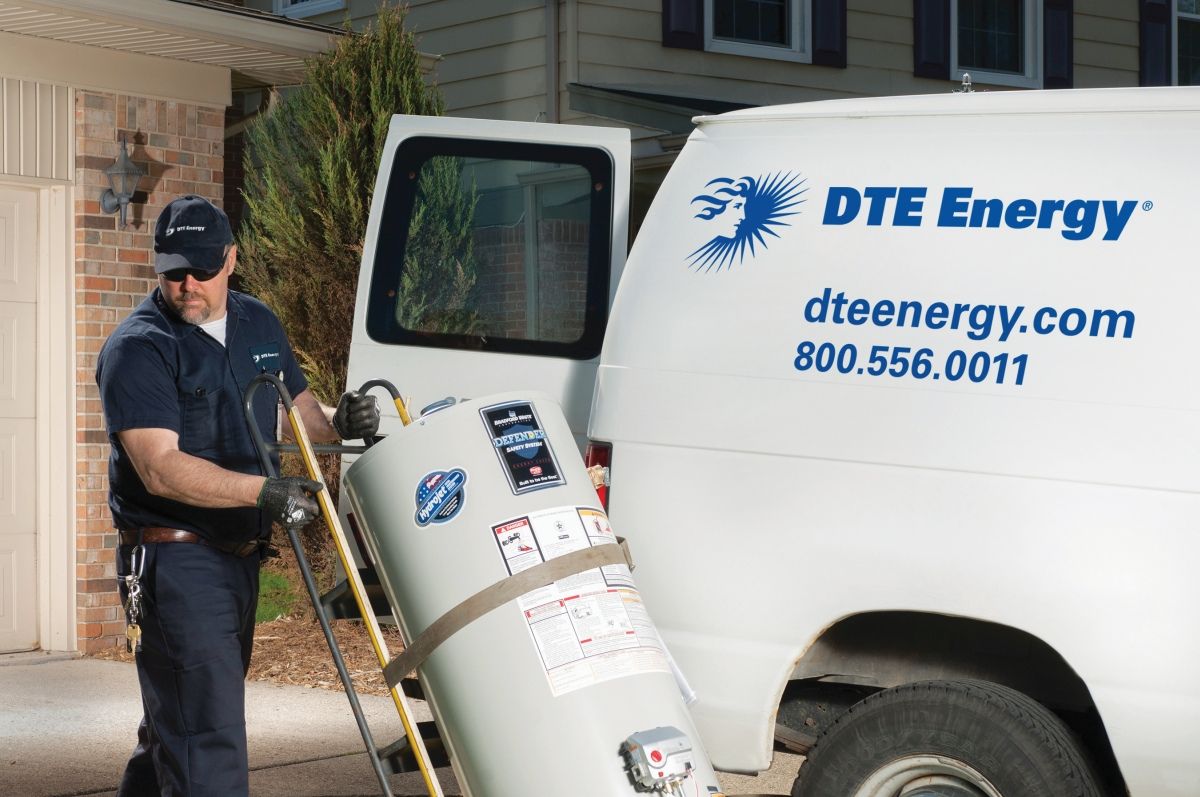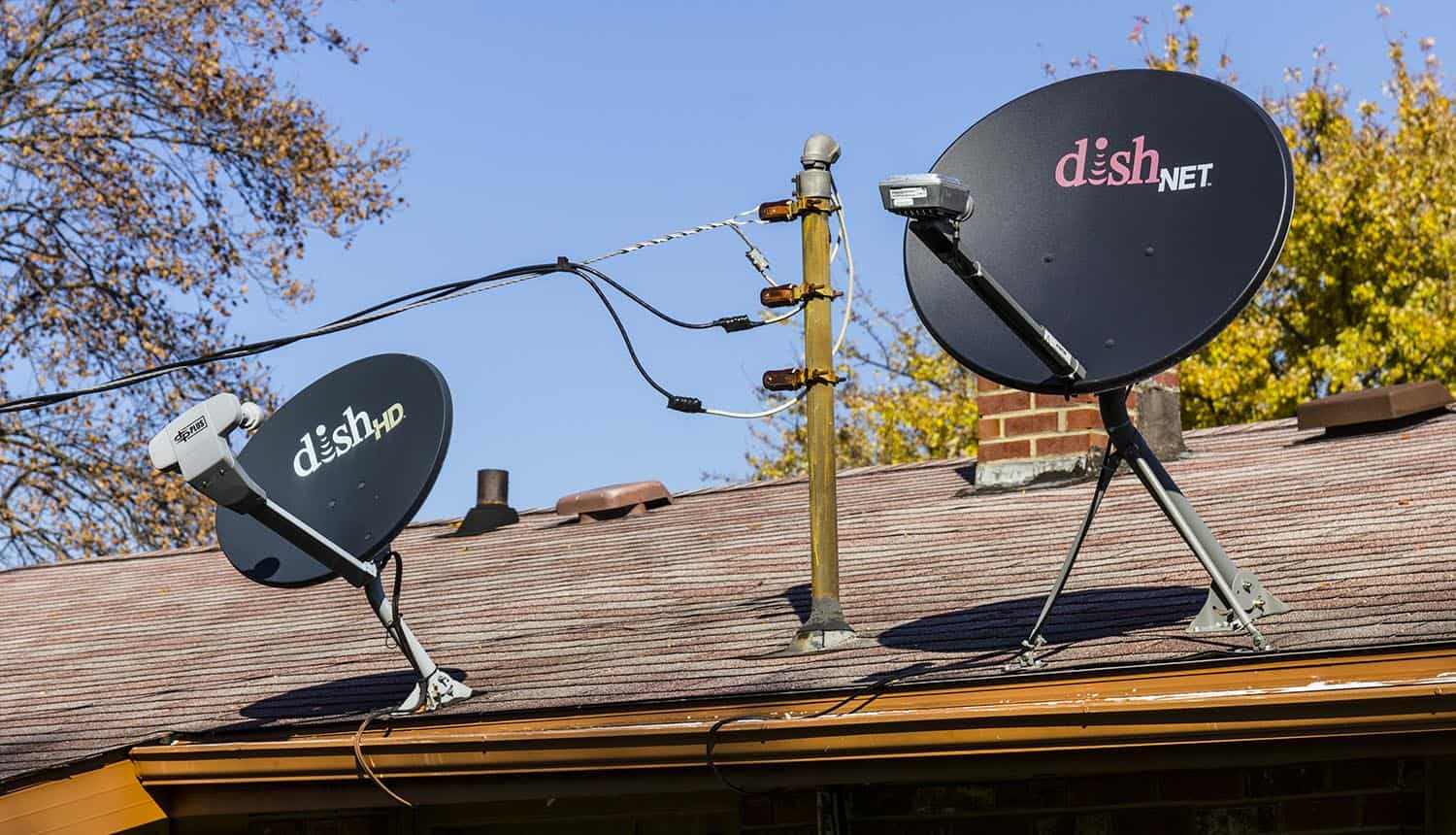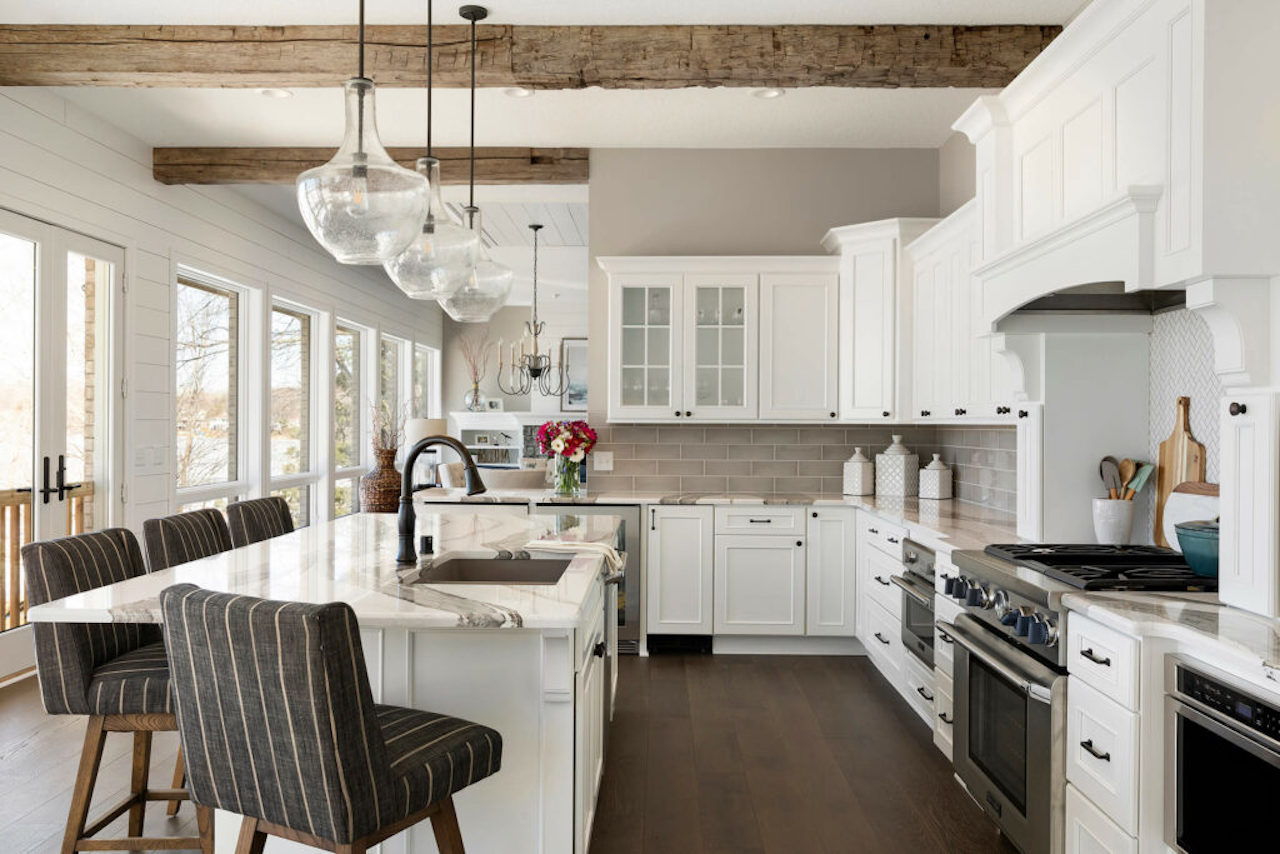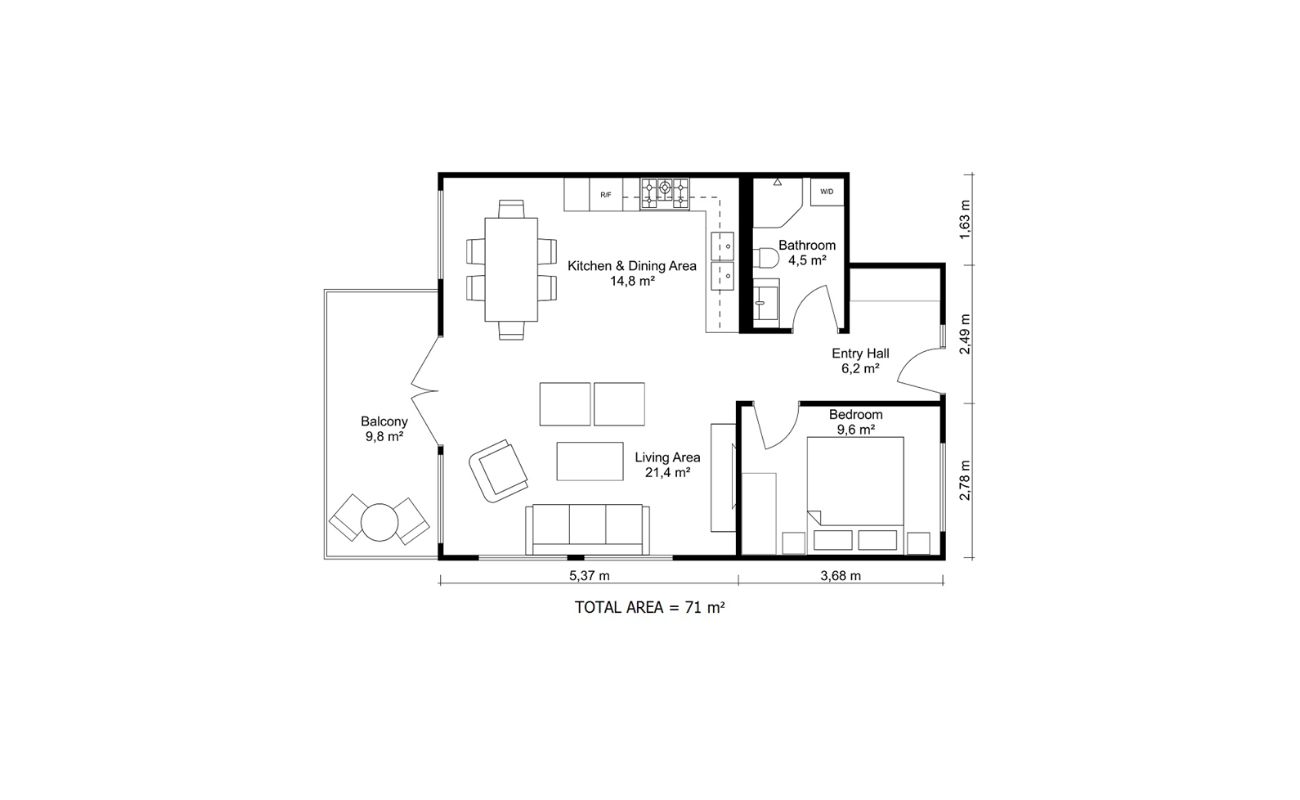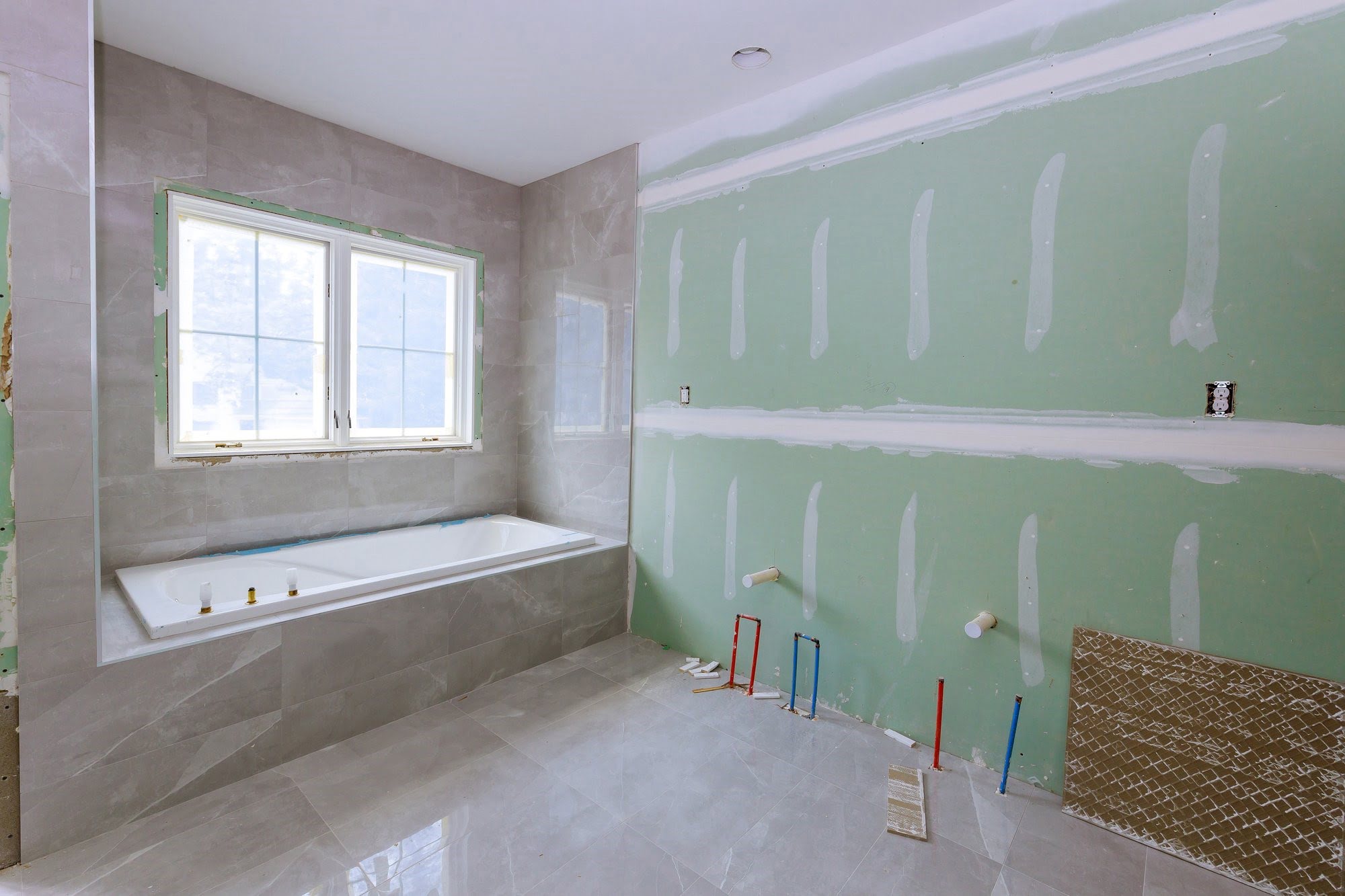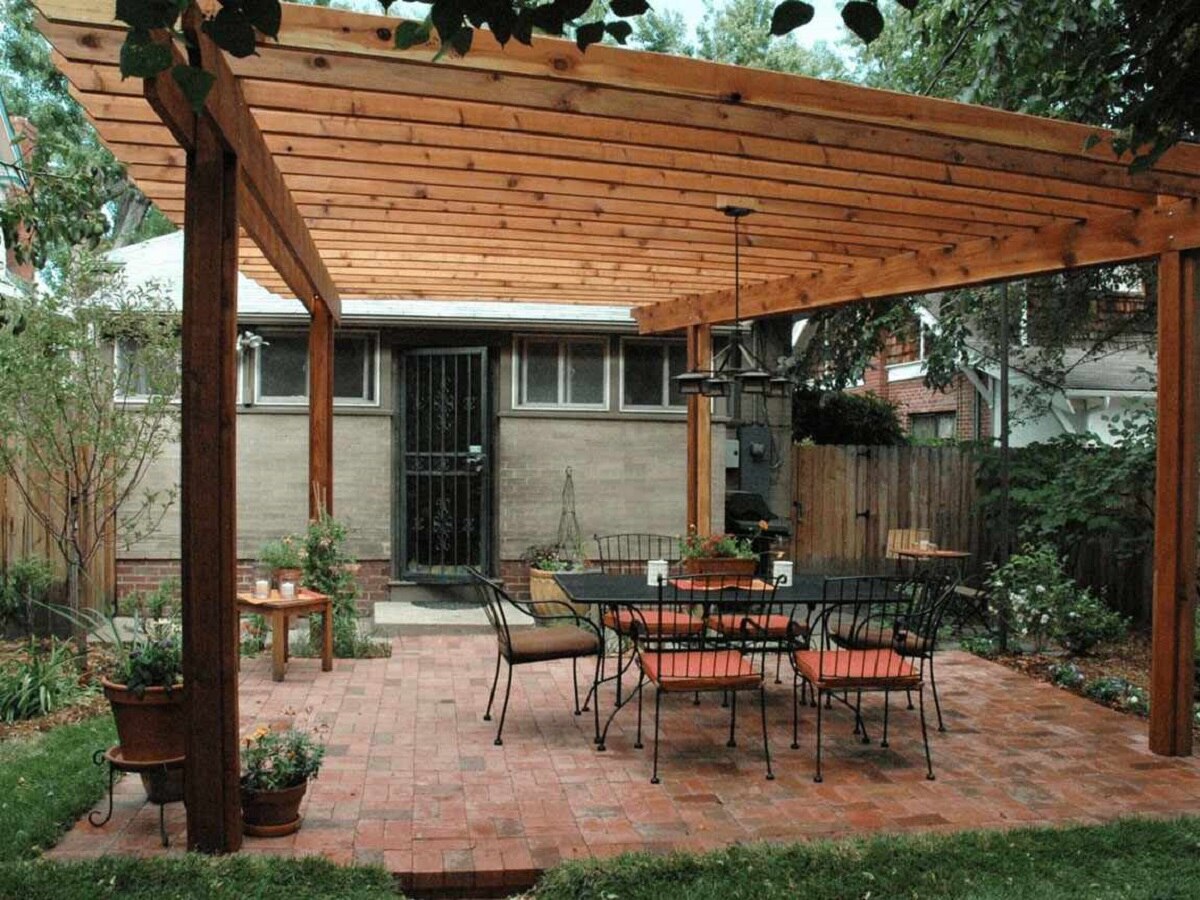Home>Home Maintenance>How To Plan For Home Maintenance


Home Maintenance
How To Plan For Home Maintenance
Modified: March 6, 2024
Learn how to effectively plan for home maintenance to keep your property in top shape. Discover expert tips and tricks for successful home maintenance for a worry-free living.
(Many of the links in this article redirect to a specific reviewed product. Your purchase of these products through affiliate links helps to generate commission for Storables.com, at no extra cost. Learn more)
Introduction
Welcome to the world of home maintenance! Whether you’re a new homeowner or you’ve owned your home for years, one thing is certain: maintenance is an essential part of homeownership. Neglecting home maintenance can lead to costly repairs and a decrease in your property’s value. That’s why it’s crucial to have a solid plan in place to keep your home in tip-top shape.
In this article, we will explore the importance of home maintenance planning and provide you with a comprehensive guide on how to create an effective maintenance schedule. By following these steps, you’ll be able to prioritize tasks, estimate costs, and effectively track and document your home maintenance activities.
So let’s get started and ensure that your home remains a safe, comfortable, and well-maintained haven for years to come.
Key Takeaways:
- Regular home maintenance saves money, extends your home’s lifespan, and ensures safety and comfort. It’s crucial to assess needs, create a schedule, set priorities, estimate costs, and track maintenance activities.
- Whether hiring professionals or DIY, planning and documenting home maintenance is essential. Be prepared for unexpected issues and learn from them to continually improve your maintenance plan.
Read more: How To Plan For Home Renovation
Benefits of Home Maintenance Planning
Proper home maintenance planning offers several key benefits that every homeowner should consider. By taking a proactive approach to maintaining your home, you can:
- Save Money: Regular home maintenance helps identify and address small issues before they escalate into major problems. By addressing these issues early on, you can avoid expensive repairs down the line.
- Extend the Lifespan of your Home: A well-maintained home is built to last. By regularly inspecting the various components of your home and addressing any necessary repairs or replacements, you can prolong the lifespan and durability of your property.
- Preserve Property Value: A well-maintained home holds its value and often appreciates over time. By investing in regular maintenance, you can ensure that your property remains attractive to potential buyers if you decide to sell in the future.
- Promote Safety: Regular maintenance helps identify potential safety hazards such as faulty wiring, gas leaks, or structural issues. By addressing these issues promptly, you can create a safer living environment for you and your family.
- Enhance Energy Efficiency: Properly maintaining your home’s systems, such as HVAC, insulation, and windows, can significantly improve energy efficiency. This, in turn, can lead to lower utility bills and a reduced carbon footprint.
- Improve Comfort and Livability: A well-maintained home provides a comfortable and enjoyable living environment. By keeping your home in good condition, you can prevent issues like leaks, drafts, or malfunctioning appliances that can disrupt your daily life or affect your comfort.
These are just a few of the many benefits that come with establishing a home maintenance plan. By devoting time and effort to regular upkeep, you can protect your investment, save money, and enjoy a stress-free homeownership experience.
Assessing Maintenance Needs
Before diving into creating a maintenance schedule, it’s essential to assess the specific maintenance needs of your home. Here are some key steps to help you in the assessment process:
- Inspect Your Home: Take a thorough walk-through of your home, both inside and outside, to identify any visible issues or areas that require attention. Look out for signs of wear and tear, damage, or aging components that may need repair or replacement.
- Review Maintenance Records: If you have any previous maintenance records or documentation, review them to get an understanding of the history and frequency of maintenance activities that have been performed. This can help you identify recurring issues or areas that may need more attention.
- Talk to Professionals: Consult with professionals such as home inspectors, contractors, or specialized technicians to assess specific areas of concern or to get their expertise on maintenance needs. They can provide insight into potential issues or recommend preventive measures.
- Consider Environmental Factors: Take into account your geographic location and the specific climate conditions that may impact your home. For example, homes in coastal areas might require more frequent maintenance due to exposure to saltwater and high humidity.
- Think Long-Term: Consider the age of your home and its various components. Older homes may require more frequent maintenance and potential upgrades or replacements of outdated systems or materials.
- Assess Personal Habits: Reflect on your own habits and how they may impact your home’s maintenance needs. For example, if you have pets or young children, certain areas of your home, such as flooring or walls, may require more frequent attention.
By thoroughly assessing the maintenance needs of your home, you can create a more accurate and comprehensive maintenance plan. This will ensure that you address both immediate concerns and long-term maintenance requirements, minimizing the risk of unexpected repairs and keeping your home in optimal condition.
Creating a Maintenance Schedule
A maintenance schedule is a crucial tool that helps you stay organized and ensures that all necessary tasks are performed in a timely manner. Here are the steps to create an effective maintenance schedule:
- Identify and Prioritize Tasks: Make a list of all the maintenance tasks that need to be completed throughout the year. This can include routine tasks like HVAC system maintenance, gutter cleaning, or landscaping, as well as seasonal tasks like winterizing your home or preparing for spring.
- Set Frequencies: Determine how often each task needs to be performed. Some tasks may be annual or bi-annual, while others may need to be done monthly or quarterly. Consider factors such as manufacturer recommendations, seasonal changes, and the specific needs of your home.
- Create a Timeline: Once you have established the frequencies, create a timeline or calendar to allocate specific dates or months for each task. This will help you distribute the workload evenly throughout the year and avoid overwhelming periods of maintenance.
- Consider Dependencies: Take into account any dependencies or constraints when scheduling tasks. For example, it may be more efficient to schedule window cleaning after gutter cleaning to avoid double work or to coordinate with professionals for specific tasks.
- Allocate Time and Resources: Estimate the time required for each task and allocate the necessary resources, whether it’s your own time, hiring professionals, or purchasing materials and equipment. This will help you plan and budget accordingly.
- Flexibility and Adaptation: Be prepared to adjust your schedule as needed. Factors like weather conditions, unexpected repairs, or changes in circumstances may require modifications to your maintenance plan. Stay flexible and adapt to ensure that all necessary tasks are still completed in a timely manner.
Remember, creating a maintenance schedule is not a one-time task. It’s an ongoing process that requires regular evaluation and adjustment. As you gain experience, you may discover additional tasks or find more efficient ways of completing existing tasks. Continuously refining your maintenance schedule will help you optimize your home’s upkeep and ensure that nothing gets overlooked.
Setting Priorities for Maintenance Tasks
With a long list of maintenance tasks to tackle, it’s important to set priorities to ensure that you address the most critical issues first. Here are some factors to consider when setting priorities for your maintenance tasks:
- Safety and Urgency: Start by identifying tasks that pose immediate safety risks or urgent issues that require immediate attention. These can include electrical problems, water leaks, or structural issues. Addressing these tasks should be your top priority to ensure the safety and integrity of your home.
- Preventive and Predictive Maintenance: Next, focus on preventive maintenance tasks that can help avoid future problems or costly repairs. This can include tasks like servicing your HVAC system, inspecting and cleaning gutters, or sealing cracks in the foundation. By being proactive, you can prevent potential issues from arising.
- Seasonal Considerations: Take into account the specific needs of each season when prioritizing tasks. For example, in the fall, focus on tasks related to winter preparation, such as insulating pipes or sealing gaps to prevent drafts. Similarly, in the spring, prioritize tasks like lawn care and checking outdoor equipment.
- Budget and Resources: Consider your budget and available resources when setting priorities. Some tasks may require significant financial investment or the hiring of professionals. Evaluate the urgency of the task and allocate resources accordingly to ensure that you can address the most critical issues within your means.
- Long-Term Impact: Assess the potential long-term impact of neglecting certain tasks. For example, delaying roof repairs may result in more extensive damage and costly repairs down the line. Taking care of tasks with long-term consequences should be prioritized to avoid further damage or deterioration.
- Personal Preference: Finally, consider your personal preferences and goals for your home. If there are specific areas or projects that matter to you, prioritize them accordingly. This can include renovations, upgrades, or beautification projects that may enhance your enjoyment of your home.
Remember that setting priorities is a subjective process, and it may vary depending on individual circumstances and the specific needs of your home. Regularly assess and reassess your priorities to ensure that you address the most critical tasks and maintain a safe and well-maintained home.
Regularly schedule home maintenance tasks to prevent costly repairs in the future. Create a checklist for monthly, quarterly, and annual tasks to keep your home in top condition.
Read more: How To Plan Your Home Decor
Estimating Costs and Budgeting
Estimating costs and creating a budget is a crucial step in effective home maintenance planning. By accurately assessing the financial requirements of your maintenance tasks, you can ensure that you have the necessary funds available and avoid any surprises. Here’s how to estimate costs and create a budget:
- Research and Gather Information: Start by researching the average costs of common maintenance tasks. Consult with professionals, contractors, or resources like home improvement websites to get a better understanding of the estimated costs for specific tasks.
- Create a List of Maintenance Tasks: Make a comprehensive list of all the maintenance tasks you have identified. Break them down into categories such as routine maintenance, seasonal tasks, and long-term projects.
- Estimate Costs for Each Task: Assign a rough cost estimate to each maintenance task on your list. Consider factors such as materials, labor, and any additional expenses like permits or equipment rentals.
- Consider Age and Condition of Your Home: Take into account the age and condition of your home when estimating costs. Older homes may require more frequent repairs or upgrades, which can increase the overall maintenance expenses.
- Factor in DIY vs. Professional Costs: Determine whether you will be performing the maintenance tasks yourself or hiring professionals. DIY tasks can save money, but you should also consider your own skills and time availability. For complex or specialized tasks, it may be more cost-effective to hire professionals.
- Create a Maintenance Budget: Once you have estimated the costs for each task, calculate the total amount needed for a year’s worth of maintenance. Divide this amount by 12 to create a monthly budget. This will help you set aside the necessary funds each month to cover maintenance costs.
- Build a Contingency Fund: It’s important to have a contingency fund for unexpected repairs or emergencies. Set aside a portion of your budget for unforeseen maintenance needs that may arise throughout the year.
- Regularly Monitor and Adjust: Keep track of your actual expenses and compare them to your budget. Regularly review and adjust your budget if needed to ensure that it aligns with your actual maintenance costs.
By estimating costs and creating a budget, you can approach your home maintenance with financial preparedness. This will allow you to effectively allocate your resources and tackle necessary tasks without any financial strain or surprises.
Hiring Professionals or DIY?
When it comes to home maintenance, one common dilemma homeowners face is whether to hire professionals or take the DIY approach. Both options have their merits, so let’s consider the factors that can help you make an informed decision:
- Skill and Expertise: Assess your own skill level and expertise in the specific maintenance tasks you need to tackle. Some tasks, such as electrical work or major plumbing repairs, require specialized knowledge and should be handled by professionals. On the other hand, if you have the necessary skills and experience, you may consider taking the DIY route for simpler tasks like painting or basic landscaping.
- Time and Availability: Consider the amount of time you can dedicate to maintenance tasks. DIY projects often require a significant time commitment, and if you have a busy schedule or limited availability, hiring professionals may be the more practical option. Professionals can get the job done efficiently and quickly, allowing you to focus on other responsibilities.
- Complexity and Safety: Evaluate the complexity and safety risks associated with the tasks you need to address. Major electrical or structural repairs, for example, can pose significant risks if not handled properly. Hiring professionals who have the necessary expertise and equipment can ensure the work is done safely and up to code.
- Cost Considerations: Compare the cost of hiring professionals versus the cost of doing the work yourself. While DIY may seem financially advantageous, it’s important to factor in the cost of materials, tools, and potentially expensive mistakes that can arise from lack of experience. In some cases, hiring professionals may actually be more cost-effective in terms of time, quality, and long-term results.
- Warranty and Guarantees: Professional contractors often provide warranties or guarantees for their work. This can give you peace of mind knowing that if any issues arise after the maintenance tasks are completed, they will be taken care of without incurring additional costs.
- Personal Preferences: Consider your personal preferences and comfort level with DIY projects. Some homeowners enjoy the satisfaction and sense of accomplishment that comes with completing tasks on their own. Others prefer to leave certain tasks to professionals to ensure quality workmanship and minimize the risk of mistakes.
Ultimately, the decision to hire professionals or do it yourself will depend on your specific circumstances, skills, and the nature of the maintenance tasks. You can also consider a hybrid approach, where you tackle smaller DIY projects while hiring professionals for more complex or specialized tasks.
Remember, safety should always be a top priority. If you are unsure about the complexity or safety of a particular task, it’s best to consult with professionals to ensure that the work is done properly and without any risks to yourself or your home.
Tracking and Documenting Maintenance
Tracking and documenting your home maintenance activities is an essential part of effective home management. It allows you to stay organized, keep a record of completed tasks, and plan for future maintenance. Here are some tips for tracking and documenting your maintenance:
- Create a Maintenance Log: Start by setting up a maintenance log or a digital spreadsheet where you can record details about each task. Include information such as the task name, date performed, description of the work completed, and any notes or observations.
- Maintain a Calendar: Use a calendar or scheduling tool to mark down upcoming maintenance tasks and deadlines. This will help you stay on track and ensure that tasks are completed in a timely manner.
- Keep Receipts and Invoices: Save receipts and invoices for any materials purchased or services hired during the maintenance process. This will be helpful for warranty claims, tax purposes, and as a reference for future maintenance.
- Take Before and After Photos: Consider taking before and after photos of maintenance tasks, especially for larger or more involved projects. This visual documentation can serve as a reference and help you assess the effectiveness of the work over time.
- Record Maintenance Costs: Keep track of the cost of materials, services, and any labor involved in completing maintenance tasks. This will assist you in budgeting for future maintenance and provide a clear overview of how resources are allocated.
- Set Reminders and Notifications: Utilize reminders and notifications on your phone or calendar to alert you of upcoming maintenance tasks. This will ensure that you don’t miss any important deadlines or overlook necessary maintenance.
- Regular Inspections: Conduct regular inspections of your home to identify potential maintenance needs. Make notes of any issues discovered during these inspections and schedule them for future attention.
- Organize Documentation: Keep all maintenance records, receipts, and documentation in one place. This can be a physical file or a dedicated digital folder on your computer or cloud storage. Staying organized will make it easier to retrieve information when needed.
By consistently tracking and documenting your maintenance activities, you’ll have a clear overview of the work that has been done and what still needs to be addressed. This documentation will be invaluable when it comes to planning future maintenance, assessing the effectiveness of completed tasks, and maintaining a well-documented history of your home’s maintenance.
Dealing with Unexpected Maintenance Issues
Despite our best efforts to plan and stay on top of home maintenance, unexpected issues can still arise. When faced with an unexpected maintenance problem, here are some steps to help you effectively deal with the situation:
- Assess the Situation: Take a moment to assess the severity and urgency of the issue. Determine if it requires immediate attention or if it can be temporarily addressed until you can fully address it.
- Take Safety Precautions: Prioritize safety by taking any necessary precautions to prevent further damage or harm. This may include turning off utilities, containing leaks, or clearing the area of any hazards.
- Document the Issue: Take photos or videos of the problem to document the extent of the issue. This documentation may be useful later for insurance claims or when seeking professional assistance.
- Seek Professional Advice: If you’re unsure about how to handle the issue or if it requires specialized knowledge, consider reaching out to professionals for expert advice or assistance. They can provide guidance on the best course of action and help resolve the problem effectively.
- Review Your Maintenance Plan: Reflect on whether the issue could have been prevented with better maintenance. Use the unexpected problem as an opportunity to review and improve your maintenance plan, ensuring that similar issues can be avoided in the future.
- Consider Budgetary Implications: Evaluate the potential financial impact of the unexpected maintenance issue. If it exceeds your budget or if insurance coverage is applicable, contact your insurance provider to determine the next steps.
- Stay Calm and Patient: Dealing with unexpected maintenance problems can be stressful, but it’s important to stay calm and patient throughout the process. Take one step at a time and seek assistance or advice when needed. Remember that with time and proper resolution, the problem will be resolved.
- Learn from the Experience: Use the unexpected maintenance issue as a learning opportunity. Assess what could have been done differently to prevent or minimize the impact of the problem. Adjust your maintenance plan or routines accordingly to prevent similar issues in the future.
It’s important to remember that unexpected maintenance issues are a normal part of homeownership. By responding promptly, seeking appropriate help when needed, and adjusting your maintenance plan as necessary, you can effectively manage and overcome these challenges, ensuring that your home remains in good condition.
Read more: What Is An ERA Home Protection Plan
Conclusion
Home maintenance is an essential aspect of homeownership that should not be overlooked. By implementing a comprehensive maintenance plan, you can ensure that your home remains in optimal condition, saving you time, money, and stress in the long run.
In this article, we explored the benefits of home maintenance planning, including cost savings, extended lifespan of your home, enhanced property value, improved safety, increased energy efficiency, and enhanced comfort and livability.
We discussed the importance of assessing maintenance needs, creating a maintenance schedule, setting priorities for tasks, estimating costs and budgeting, and the decision-making process of whether to hire professionals or take the DIY approach. Additionally, we highlighted the significance of tracking and documenting maintenance activities and how to handle unexpected maintenance issues effectively.
Remember, home maintenance planning is an ongoing process that requires regular evaluation and adjustment. Stay vigilant, address issues promptly, and continually refine your maintenance plan to ensure a well-maintained home.
By dedicating time and effort to home maintenance, you can protect your investment, maintain a safe and comfortable living environment, and enjoy the benefits of a well-cared-for home.
So, roll up your sleeves, put your maintenance plan into action, and take pride in the care and upkeep of your beloved home. Your efforts will pay off in the long run, ensuring that your home remains a haven for years to come.
Frequently Asked Questions about How To Plan For Home Maintenance
Was this page helpful?
At Storables.com, we guarantee accurate and reliable information. Our content, validated by Expert Board Contributors, is crafted following stringent Editorial Policies. We're committed to providing you with well-researched, expert-backed insights for all your informational needs.



